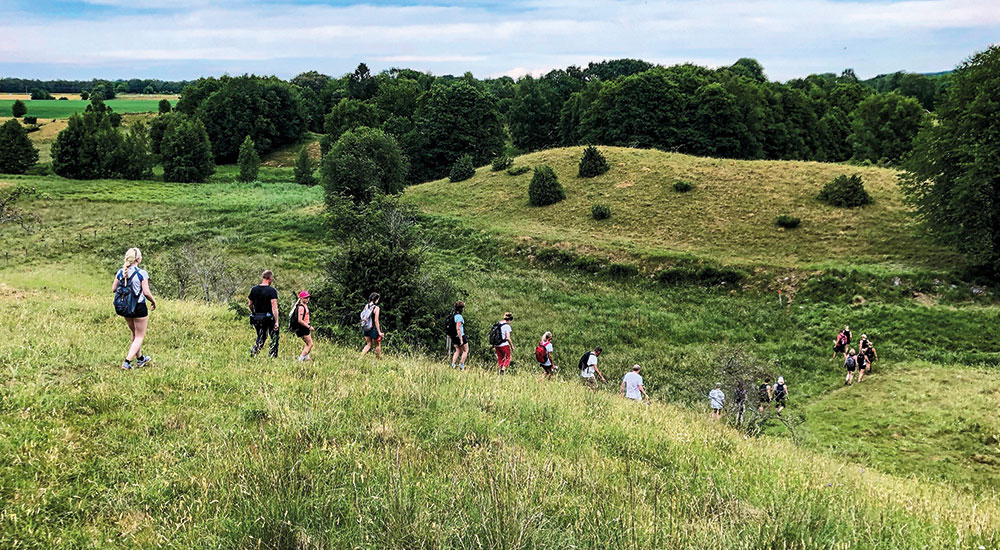
The landscape here is rolling and constantly changing, featuring hills, ridges and small lakes. This distinctive landscape was shaped by the last ice age.
When the ice melted after the last ice age the climate suddenly become colder for some time. This interrupted the melting of the ice, and the ice front remained stationary over the same area for a long time – right here in Valle. Large rivers of melt water carried massive amounts of gravel and sediment. Icebergs of various sizes were also submerged in the gravel. When these melted they left behind pits in the landscape, known as kettle holes.
Sediment was also deposited in cracks on top of the large blocks of ice and later formed kames in the landscape. Underneath the ice, running water created ridges of stone and gravel known as eskers. All these land forms and many others created the foundation for the rolling landscape and diversity we see today. This has given rise to a distinctive flora and fauna, as well as fertile farmland made up of meadows and pastures. We recommend visiting the Valle region in May, when the cherry trees are blossoming!


